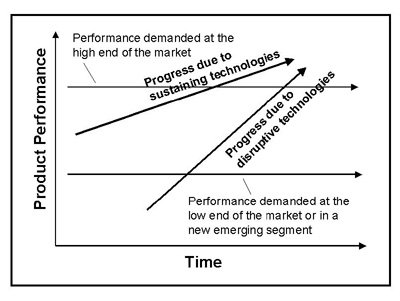PicoSpin and the Incredible Shrinking Lab
$20,000 now buys you a 7 lb, 45 MHz, network-connected NMR spectrometer capable of running as little as 20 µL of sample volume.
To look at the PicoSpin and conclude it's not as good as your 500 MHz spectrometer at work would be missing the point. This is an early-phase marketplace disruption in action.
Like all marketplace disruptions, picoSpin's product offers significantly worse performance in key areas - notably signal-to-noise ratio and resolution. If that were the whole story, picoSpin would be dead in the water. But like all marketplace disruptors, picoSpin offers advantages not available anywhere else in the market:
- You can put it next to your fume hood (or even in your fume hood - possibly in a glovebox).
- It's dead simple to set up, use, and maintain.
- It doesn't require dedicated staff to keep it running.
- You can carry it with you.
- It costs a tiny fraction of the marketplace leader.
All of these factors mean picoSpin will be used in applications for which a low-resolution, low sensitivity instrument works just fine and a 500 MHz instrument is overkill. Some applications will be familiar, but others will be unprecedented. It doesn't take much effort to identify a number of them.
If picoSpin turns out to be a marketplace disruptor, it will displace existing products by following the well-trodden path of attack from the bottom:
Existing instrument makers will likely view picoSpin as a niche product catering to a tiny market with wafer-thin profit margins and not nearly enough money in it to justify the effort. Any middle-manager trying to suggest otherwise will find little support within these companies.
And this is the final, essential ingredient that makes it possible for an unknown newcomer to topple an industry giant.
